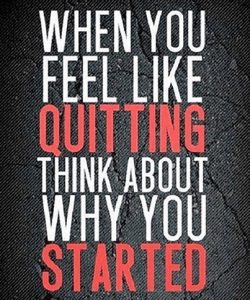How often do I have to train to get results?

Finger injuries
September 29, 2019
Injury
October 14, 2019How often do I have to train to get results?


Almost daily I talk to people in the clinic that wants to start training or have tried to get into a training routine but don’t really know how to start.
It can be hard to navigate in this jungle of information we’re bombarded with when it comes to training and fitness, not to mention all the fitness influencers that daily post pictures of their workout and nutrition routines. However, copying a program from someone who’s trained for a long time may not be the best way to start if you are new to training. Not only may it increase your risk of getting injured, but chances are you’re going to lose motivation and stop after a short time if you jump on to a tough workout regime. Remember, you are going to fit working out into a probably already busy schedule, and your body also need to get used to the new added stress.
On the positive note, as a beginner you increase fast in strength the first months following a program. You may see increase in strength every week, or even after every session. It may be tempting then to think that more is better, but if increasing the volume too fast it can also lead to faster stagnation as the body may not have the time to recover, and worst-case lead to aches, pains and over-use syndromes or injuries. As you get stronger, the curve will flatten simply because your muscles become stronger and can tolerate a higher load.
Some explanation of terms used in training:
Repetition/Rep: the number of times you lift and lower a weight in one set of an exercise.
Set: A group of reps. If you are doing 3 sets of an exercises, it means you will perform the number of repetitions in 3 rounds (sets!).
1RM: Your one-repetition maximum is the maximum amount of weight that you can lift one time for a given exercise.
Intensity: How heavy the weight is compared to your one-repetition maximum (1RM). To make it simple, if your 1RM is 100kg and you are lifting 60kg, the intensity is 60% of your 1RM.
Volume: The total number of reps and sets completed in a given workout.
Frequency: How often. For example, how many times a week you will train.
So how often, how long and how much do you need to lift for you to get stronger and build muscles? Most studies now suggesting that if you lift within 40-85% of your 1RM you will put enough strain on your muscles to stimulate muscles growth on the 5 last repetitions of a set to exhaustion. A high rep program (15-20 reps in each set) is generating a higher exhaustion on the system, while lifting with a heavier load but lower reps (1-5 reps in each set) gives a higher strain on joints, tendons and connective tissue. So, a good rule may be to start within a repetition range from 6-12 reps.
Below are some recommendations on how much and often you should lift, depending on your level.
| Beginner | Intermediate | Advanced/Elite | |
| Compound movements* | 60-70% of 1RM | 70-80% of 1RM | 80-90% of 1RM |
| Isolation movements** | 50-60% of 1RM | 55-65% of 1RM | 60-70% of 1RM |
*Compound movements: exercises that involve more than one joint or muscle group, like squats, deadlift, bench press, pull ups etc.
** Isolation movements: exercises that involve only one joint or a limited number of muscle groups, like biceps curls, leg extension, hamstrings curl etc.
Starting on this intensity will be heavy enough for you to get results. As you get stronger and more experienced your body can tolerate more. 
You also don’t have to workout 5-6 times a week. If you just started training you will get great results going 2 times a week. If you already struggle to find the time during a busy week with work and family obligation, how do you think starting off with a 5-day routines gonna work? It’s not sustainable over time, and it is not needed either.
| Beginner | Intermediate | Advanced/Elite | |
| Weekly volume | 6-9 sets | 8-18 sets | 12-24 sets |
| Frequency | 1-2 x/week | 3-4 x/week | 4-7 x/week |
| Volume per muscle group per workout | 2-3 sets | 2-4 sets | 2-6 sets |
2 times a week of working out should be possible for most people, and knowing that you don’t have to go to any extreme measures to increase your fitness level should give you motivation to get started.
A few simple tips at the end
- Keep in mind that creating new habits and routines takes time, and you will have to be strict with yourself until it becomes a natural part of your life.
- Plan your week ahead, and choose a time where it is more likely that you will go to the gym. If you always end up working over-time, plan your workout in early morning before work.
- 30-60 minutes is enough.
- You will get sore! This is completely normal and expected but it gets better with time. And no, soreness does not mean you didn’t stretch enough.
- Sleep is important for recovery, so get enough of it.
- Think of this as a long-term project. You want to create a routine you can follow over time. You may feel exhausted and demotivated at times, but don’t give up. In the long run you will feel stronger, have more energy, sleep better and feel less aches and pains in your body caused by everyday stress and long hours sitting in front of a computer.
[ad_2]



